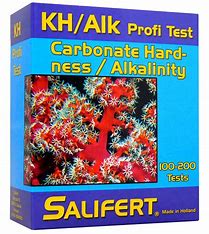1
/
of
2
Salifert
Carbonate Hardness & Alkalinity (KH/ ALK) Test Kit -Salifert
Carbonate Hardness & Alkalinity (KH/ ALK) Test Kit -Salifert
Regular price
$16.46 USD
Regular price
Sale price
$16.46 USD
Unit price
/
per
Shipping calculated at checkout.
Couldn't load pickup availability
The Carbonate Hardness & Alkalinity (KH/ALK) Test Kit by Salifert stands out for its precision and ease of use. Designed specifically for aquarists, this kit measures alkalinity in fine increments of 0.1 meq/L or 0.3 dKH, allowing for the detection of subtle changes that can impact coral health.
With the ability to perform approximately 100 to 200 measurements, it ensures that your aquarium's carbonate hardness remains stable, crucial for maintaining a thriving marine environment. The Salifert kit not only simplifies testing but also aids in effective pH management, making it an essential tool for serious reef keepers.
Share




